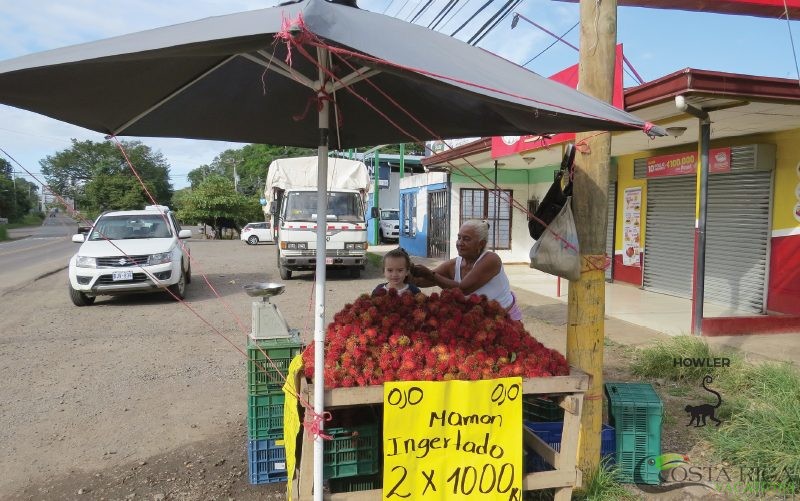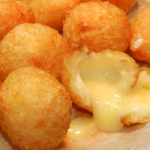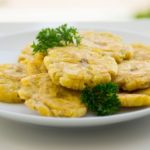With its tropical climate, it’s no surprise that luscious, Costa Rica fruit is available everywhere. You are well aware of of pineapples, strawberries, apples, bananas, and papayas.. These are all sold in supermarkets. And straight-from-the-farm pickings can be found at the fruit stands and fairs popping up all over the country.
Yet, Costa Rica’s subtle fields yield a number of other fruits that may not be known to the country’s visitors such as you. Here’s a rundown of what we here at Costa Rica Vacations believe are but some of the delicacies enjoyed here. You should give them a try.
MANGO
The Mango is certainly well known the world over, especially the ripe ones with reddish-yellow skin and orange pulpy interior. They are just plain delicious. Yet, you might be surprised to learn that the green, unripe mango is popular here. Connoisseurs eat it with lemon and/or salt for a tangy taste experience.
MAMON CHINO
You will know this fruit right away when you see it everywhere in Costa Rica. The Mamon Chino looks like a red sea urchin! But the spines are soft and harmless. Inside is a large lychee-like fruit with a sweet and sour taste.
CAS
Otherwise known as a Costa Rican Guava. The Cas is a small, round fruit, that’s greenish-yellow. Its flavor is very tart, and Cas is not usually eaten as is. Most likely you will be offered a natural Cas and sugar drink. On rare occasion, a vendor will sell cut and salted fruit.
STAR FRUIT
This fruit’s a beauty. If you turn the five-lobed, waxy yellow-skinned Star Fruit on its side, it looks exactly like a cute little star. Inside, its grape-like texture is sweet with a hint of tartness. Eat the entire Star Fruit including the skin: raw, cooked, juiced. You will likely see the stars as a drink garnish.
STAR APPLE
These small, smooth variable-colored fruits also resemble a star when cut in half. How do you know which one to eat when it can be purple, red, yellow or green on the outside? Just go for any of them. The inside is sweet, like a combo of apple, lychee and even persimmon.
PASSION FRUIT
This fruit is referred to as Maracuyá around the country. And, it is widely used in Costa Rica juices and desserts. Even though there are three kinds of Maracuyá, the most prevalent are the large, oval fruits with thick, bright yellow rinds. Inside, is a large hollow cavity filled with a sweet, almost floral yellow, gelatinous pulp. You can even eat the seeds.
GUANÁBANA
Yet, another fruit that says: “Don’t judge a book by its cover.” It’s a large green prickly thing that may smell a lot like a pineapple. But, the taste is a medley of strawberries and apple. Some doctors even proport that eating Guanábana can aid in fighting cancer, keeping a healthy heart, prevent osteoporosis, even deal with hemorrhoids.
PEJIBAYE
One of the first things you may notice in the produce section of any local fruit stand or market is a container of boiled water filled with the Pejibaye, or Peach Palm Fruit. The fruit, from the same palm tree as the hearts of palm used in salads, must be boiled for at least 3 hours once harvested. The taste is more savory than sweet, but extremely popular with Costa Ricans.
NONI
This fruit may stink to high heaven, and require a strong constitution to consume. But if you do, the benefits may be off the chart. On the outside, Noni is green with eye-like spots, with white flesh and blackseeds. It’s loaded with vitamins, minerals and antioxidants. These days, extracts and powders of the fruit are now being included in alternative medicine. The website webmd reports that people are using Noni to treat cancer, high blood pressure, athletic performance, and other conditions. This, and the other named Costa Rica fruit, may be part of the reason that there are so many over 90-aged persons in Costa Rica! Could be their diet.









































